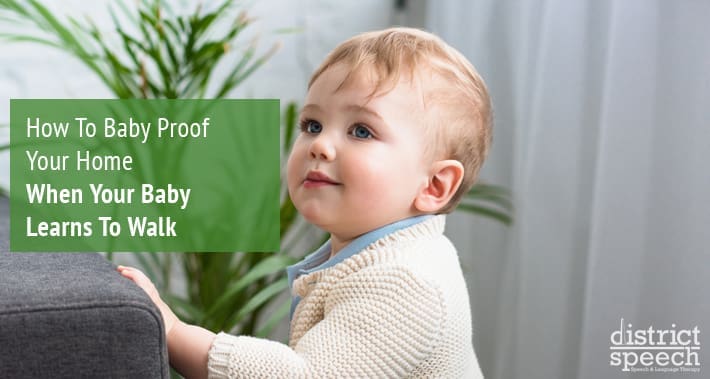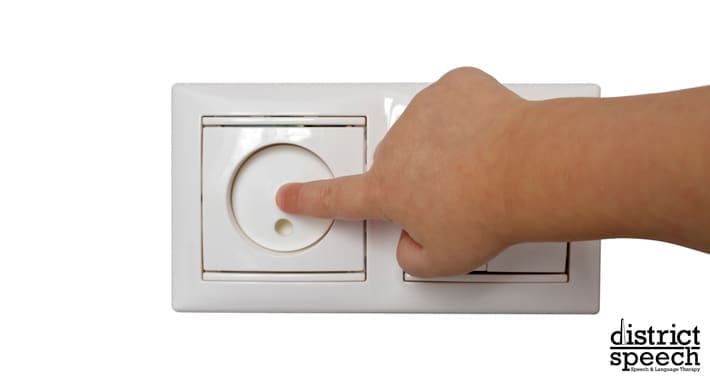
[ez-toc]
Parenthood is a time chock full of breathtaking moments and fulfilling experiences.
Your baby’s first steps are one such example.
Most parents and caregivers describe teaching their baby to walk as one of the most exciting and rewarding moments of their child’s formative years.
Your child is growing up and gaining independence.
And now, they’ve gained the ability to get into things (and trouble) which they couldn’t before.
Last week, we talked about how to teach your baby to walk, and when you might need help from a pediatric physical therapist in Washington DC.
But once your precious bundle of joy begins mastering the art of walking, there’ll be a whole host of new problems to tackle.
And without solutions, you’ll baby will surely get into trouble on their walking endeavors.
According to the Children’s Hospital of Los Angeles, mouth and tooth injuries from trips and falls are particularly common in children learning to walk.
RELATED: How Do Your Teeth Affect Speech?
Fortunately, your friends here at District Speech And Language Therapy can help.
In this article, we’ll explore ways to baby proof your home to protect your child’s safety as they learn to walk.
Keep reading to learn how to baby proof your home.
General Baby Proofing Tips
You’ll want to start thinking about baby proofing your home well before the baby comes home from the hospital.
RELATED: Speech Issues Common In Premature Babies
Otherwise, you may end up too busy caring for your newborn to take care of baby proofing afterwards.
Thankfully, there’s plenty of tips available to aid in your baby proofing journey.
Some general tips for baby proofing include:
- Fix or replace broken, wobbly, or otherwise dangerous furniture
- Check carbon monoxide and smoke detectors to ensure proper working order; replace batteries on a regular basis
- Purchase or replace expired fire distinguishers
- Purchase or restock your household first aid kit
- Keep at least one landline phone for use in emergencies
- Fix any peeling paint in your home, especially if your house was built before 1978 when lead paint was banned
- Ensure any toxic houseplants are kept out of reach
In the remainder of the article, we’ll take a room by room walk through your home, discover some of the specific hazards each room has, and explore ways to baby proof them.
How To Baby Proof Your Living Room
You might not think of your living room as having as many hazards as your kitchen or bathroom.
After all, most living rooms don’t contain many heated elements or sources of running water.
However, it has hazards of its own.
Some tips to consider when baby proofing your living room include:
- Ensure any cords for blinds, or ties for curtains, are out of reach
- Add padding to corners of tables, fireplaces, or anything with a hard edge or corner to help prevent traumatic brain injury or other injuries
- Install screens over the fireplace
- Secure televisions and any large, heavy items or furniture to the wall
- Keep batteries, or any item using them, out of reach
- Get plastic outlet covers for all electrical plugs
How To Baby Proof Your Laundry Room
Your newly walking baby isn’t aware of all the hazards within your laundry room.
In fact, to them, it may even appear like a room full of fun.
After all, many adults would struggle resisting the temptation of playing in bubbles, such as the ones made by laundry detergent.
RELATED: Games & Toys To Promote Language and Articulation: Bubbles
However, laundry rooms are full of potential dangers for a toddler.
Tips to protect your child from common laundry room hazards include:
- Ensure your washer and dryer are pushed up against the wall so no one can get trapped behind them
- Ensure all detergents and cleaners are in a locked cabinet
- Put a child lock on your washer and dryer, especially front loading ones
- Add a child proof lock, or a baby gate, to block off the laundry room

How To Baby Proof Your Baby’s Bedroom
In a perfect world, every baby’s bedroom would be a safe haven.
But although it’s their space, it’s up to you as a caregiver to ensure that your baby’s bedroom is perfectly safe for them.
Of course, one way you can accomplish this is through providing a gentle, nurturing environment during bedroom related baby activities, such as tummy time.
However, baby proofing is equally important.
Tips for baby proofing your baby’s bedroom include:
- Secure furniture to the walls
- Ensure the slats on your baby’s crib are no more than 2 ⅜ inches apart
- Add safety straps to the changing table
- Keep all hanging toys, such as crib toys, out of reach
- Ensure the gap between the side of the crib and the mattress is less than two fingers in width
- Remove toys, pillows, or blankets from the crib
- Install bed rails on your child’s “big kid bed” when the time comes
How To Baby Proof Your Kitchen
The kitchen can present several potential dangers for babies and small children.
The typical modern kitchen is full of hazards, such as hot surfaces, sharp objects, and choking hazards.
RELATED: Pediatric Speech Therapy Treatments For Feeding & Swallowing Disorders
For this reason, it’s important to ensure that your child is never left unattended in the kitchen.
Even then, it’s incredibly important to baby proof this room.
Here’s how:
- Make sure sharp objects, such as knives, are kept in a locked drawer
- Put child locks on all cabinet doors, especially ones containing cleaners or other common kitchen chemicals
- Put child locks on the stove, refrigerator, and dishwasher doors
- Remove small magnets, which pose a choking hazard, from the refrigerator
- When possible, use the back burners while cooking and keep pots and pans out of reach by turning handles inwards
How To Baby Proof Your Dining Room
The last thing you want to think about while enjoying a nice meal is whether your dining room is a hazard to your child.
Some things to be mindful of when baby proofing your dining room include:
- Keep your liquor cabinet locked
- Avoid using tablecloths, which’ll tempt your child to pull at, especially if you’re serving hot food, or have candles burning
How To Baby Proof Your Stairs
Homes with more than one floor present a unique challenge for baby proofing.
If you live in a home with stairs, it’s important to take extra steps to ensure your child’s safety.
This is especially important since bedrooms are located upstairs in most homes.
Here’s how to keep your stairs safe for baby:
- Securely install baby gates at the top and bottom of your stairs
- Use mats under rugs, carpets, or runners to stop them from slipping
- Consider installing a monitor to keep tabs on your child as they start to walk on their own; these devices hang on the outside of a child’s bedroom door and send a signal to your smartphone if they leave their room
How To Baby Proof Your Home Office
Whether your home office is a separate room, or a designated space in another area of your home, baby proofing is a necessity.
Some tips for baby proofing your home office include:
- Ensure any heavy books or equipment which could fall are placed near the ground
- Secure any cords for computers and other equipment to your baseboards
- Add padding to any sharp corners, such as desks and filing cabinets
- Ensure all sharp objects, such as scissors, staplers, thumb tacks, and letter openers, are locked away when not in use
How To Baby Proof Your Bathroom
Bath time might be a great way to bond with your little one, but keeping the bathroom safe is important too.
Believe it or not, your bathroom is one of the most dangerous rooms in the house.
According to the Centers for Disease Control and Prevention, approximately 235,000 Americans sustain non fatal bathroom related injuries each year.
So, you can appreciate just how important baby proofing this room is.
Some tips for keeping your bathroom baby friendly include:
- Keep all cabinets and drawers containing cleaning supplies or medications locked
- Use a cover on the tub spout
- Purchase mats to keep from slipping in and around the bathtub
- Use toilet locks to keep from drowning (and to keep your toddler from flushing things they shouldn’t)
What If My Baby Isn’t Walking Yet?
Most children will begin learning to walk around one year of age.
Of course, this is just an estimation; some children master the art of walking earlier than others, while others take a bit longer to begin walking.
This variation is completely normal.
The important thing to remember is that walking doesn’t happen overnight.
If you notice that your child isn’t walking by around 14 months of age, then you might consider meeting with a pediatric physical therapist to see if there is a larger issue at play.
Delayed walking is more common in babies with certain conditions, including:
- Physical limitations due to premature birth
- Having been diagnosed with Down syndrome
- Developmental hip dysplasia
- Rickets
- Muscular difficulties due to cerebral palsy
- Muscular dystrophy
So, if your baby is living with any of the above conditions, it’s a good idea to seek help from a pediatric physical therapist or pediatric occupational therapist.
Additionally, a speech therapist for kids can help with any accompanying speech difficulties.
No matter the type of therapy, early intervention will help ensure your child catches up with their peers as quickly as possible.
Book Your Appointment With District Speech Today
Are you worried your baby learning skills, such as crawling or walking, slower than their peers?
Have they passed the one year mark, and are still showing no signs of trying to walk on their own?
Do you want to ensure there are no other issues impacting your child’s delayed walking?
We’re District Speech, and we can help.
Our qualified physical therapists can provide assessment and solutions to help your child get back on track in their walking endeavors.
Book your appointment with District Speech today to find out more about how we can help your child get moving.
1300 I St NW, Suite 400 E,
Washington, DC 20005
- https://g.page/districtspeech
District Speech and Language Therapy specializes in speech therapy, physical therapy, and occupational therapy solutions, for both children and adults, in the Washington D.C and the Arlington Virginia areas.